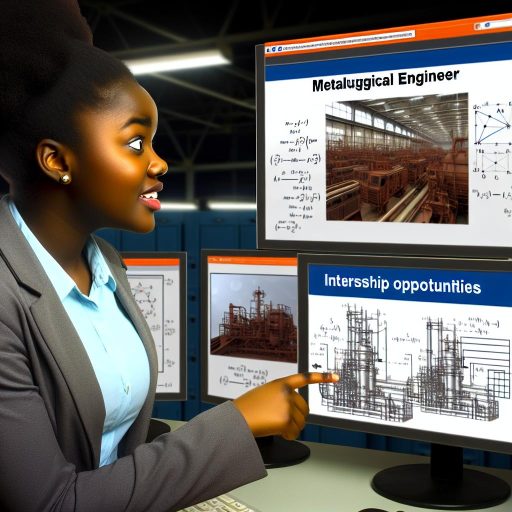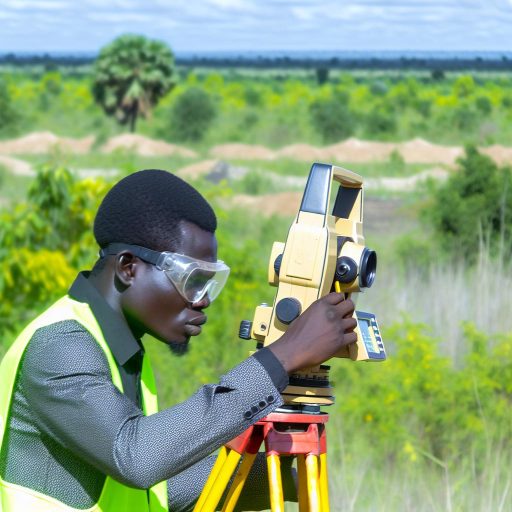Introduction:
Mechatronics engineering is a field that integrates mechanical, electrical, and computer engineering to create innovative solutions.
It plays a crucial role in advancing technology in various industries.
Its interdisciplinary nature allows students to gain a comprehensive understanding of how different engineering disciplines work together to solve complex problems.
This holistic approach makes mechatronics engineering a highly sought-after field in the technological world.
Hands-on projects play a crucial role in the development of mechatronics engineering students.
Significance of practical projects in enhancing understanding of mechatronics concepts:
- Hands-on projects provide students with a practical application of theoretical concepts.
- Students can gain a deeper understanding of complex theories through practical implementation.
- Practical projects help students visualize and experience real-world applications of mechatronics.
- Engaging in hands-on projects fosters creativity and problem-solving skills in students.
- Students learn to work collaboratively and communicate effectively while working on practical projects.
How hands-on projects help students apply theoretical knowledge to real-life scenarios:
- By working on hands-on projects, students can bridge the gap between theory and practice.
- Applying theoretical knowledge to real-world projects enhances students’ problem-solving abilities.
- Students learn to troubleshoot and debug issues that may arise during project implementation.
- Hands-on projects allow students to test and validate their theoretical understanding through practical experimentation.
- Through hands-on projects, students can see the direct impact of their theoretical knowledge on tangible outcomes.
Hands-on projects are integral to the learning process of mechatronics engineering students.
These projects provide a platform for students to apply their theoretical knowledge in practical scenarios.
Such engagement enhances their understanding of complex concepts and fosters important skills.
Skills such as problem-solving, teamwork, and communication are developed through this process.
Students not only enrich their educational experience but also prepare themselves for real-world challenges.
This preparation is especially relevant in the field of mechatronics engineering.
Criteria for Selecting Mechatronics Engineering Projects
When it comes to selecting a mechatronics engineering project, students should consider several criteria to ensure they choose the right idea that aligns with their interests, skills, and future career goals.
Here are some guidelines to help students make an informed decision.
- Feasibility
- Relevance
- Innovation
- Alignment with Interests and Career Goals
- Technical Complexity
- Collaboration Opportunities
- Ethical Considerations
- Resource Availability
One of the most important criteria for selecting a mechatronics engineering project is feasibility.
Students should assess whether the project is achievable within the given time frame, budget, and available resources.
They should consider the complexity of the project and their own skills and expertise in the subject matter.
Another crucial factor to consider when choosing a project idea is its relevance to the field of mechatronics engineering.
Students should aim to select projects that are aligned with current industry trends, challenges, and technological advancements.
This ensures that the project is meaningful and has practical applications in the real world.
Choosing a project that is innovative and pushes the boundaries of mechatronics engineering is key to standing out and making a significant impact.
Students should look for project ideas that offer a unique solution to a problem or introduce a new technology or design concept.
Innovation is highly valued in the engineering field and can set students apart from their peers.
It is essential for students to select a project idea that aligns with their interests, passions, and long-term career goals.
By choosing a project that they are passionate about, students are more likely to stay motivated, dedicated, and engaged throughout the project development process.
Additionally, selecting a project that aligns with their career aspirations can help students gain relevant experience and skills that will be valuable in their future endeavors.
While it is important to select a project that is feasible and achievable, students should also challenge themselves by choosing projects that offer a certain level of technical complexity.
This allows students to expand their knowledge, skills, and problem-solving abilities.
A project that is too simple may not provide students with the opportunity to learn and grow as engineers.
Students should also consider the potential for collaboration with industry partners, academic advisors, or fellow students when selecting a project idea.
Collaborative projects offer students the chance to work in a team, leverage each other’s strengths, and gain exposure to different perspectives and expertise.
Collaboration can enrich the project development process and result in a more comprehensive and well-rounded final product.
It is crucial for students to consider the ethical implications of their project ideas and ensure that their work complies with ethical standards and guidelines.
Students should conduct thorough research, consult with ethical committees if necessary, and make decisions that prioritize the well-being of individuals, society, and the environment.
By addressing ethical considerations, students can ensure that their project has a positive impact and upholds the values of integrity and responsibility.
Lastly, students should assess the availability of resources such as equipment, tools, materials, and mentorship when selecting a mechatronics engineering project.
It is important to choose a project idea that can be feasibly implemented given the available resources at the students’ disposal.
Students should also consider the accessibility of relevant literature, databases, and technical support to aid them in their project development process.
By considering these criteria and guidelines, students can make informed decisions when selecting mechatronics engineering projects that are aligned with their interests, skills, and career goals.
Transform Your Career with Expert Guidance
Get personalized mentorship consulting that’s tailored to your unique path. Our expert advice is actionable and exclusive.
Get StartedChoosing the right project idea can set students on a path to success, creativity, and personal fulfillment in the field of mechatronics engineering.
See Related Content: Bioengineering Applications in Agriculture in Nigeria
Sample Mechatronics Engineering Project Ideas:
Are you a mechatronics engineering student looking for exciting project ideas?
Here are some innovative suggestions to inspire your next mechatronics project:
Robotic Arm:
- Design and build a robotic arm that can pick up and manipulate objects with precision.
- This project can have various applications in industries like manufacturing and healthcare.
- Explore different sensors and actuators to enhance the arm’s functionality and versatility.
Autonomous Vehicle:
- Create a self-driving car prototype using sensors, microcontrollers, and machine learning algorithms.
- Autonomous vehicles have the potential to revolutionize transportation and improve road safety.
- Experiment with obstacle detection, path planning, and decision-making algorithms for the vehicle.
Smart Home System:
- Develop a smart home automation system that can control lights, appliances, and security devices.
- This project combines elements of robotics, IoT, and artificial intelligence for home convenience.
- Integrate voice recognition or motion sensors for hands-free operation of the smart home system.
These project ideas are just the tip of the iceberg when it comes to mechatronics engineering.
You can customize and expand upon these ideas to create innovative projects that showcase your skills and knowledge in the field.
Get started on your mechatronics project today and unleash your creativity!
Uncover the Details: Role of Biomedical Engineers in Nigerian Hospitals
Resources and Tools for Mechatronics Engineering Projects:
List essential resources and tools that students may need to complete their projects, such as Arduino boards, sensors, actuators, and programming software.
- Arduino Boards
- Sensors (e.g., temperature, humidity, proximity)
- Actuators (e.g., motors, pumps, valves)
- Programming Software (e.g., Arduino IDE, MATLAB, LabVIEW)
Where to Access These Resources:
Students can access these resources through a variety of avenues, including academic institutions, online platforms, and local stores.
Academic Institutions: Many universities and colleges have labs equipped with the necessary tools and resources for mechatronics projects. Students can borrow or use these resources under the supervision of their professors.
Online Platforms: Websites like SparkFun, Adafruit, and Amazon offer a wide range of Arduino boards, sensors, actuators, and other components necessary for mechatronics projects. Students can easily purchase these items online and have them delivered to their doorstep.
Local Stores: Some local stores specialize in electronics and robotics components. Students can visit these stores to purchase Arduino boards, sensors, actuators, and other tools needed for their projects. Additionally, these stores may offer guidance and recommendations on the best tools for specific projects.
Discover More: Government Policies Affecting Mechatronics Field

6 Steps for Executing Mechatronics Engineering Projects:
Begin by defining the project scope, objectives, and deliverables.
Create a timeline and budget for the project.
Step 1: Project Planning
Develop detailed design drawings and a bill of materials.
Consider factors like cost, feasibility, and safety.
Step 2: Design Phase
Choose the necessary components such as sensors, actuators, microcontrollers, and power supplies based on project requirements.
Step 3: Component Selection
Assemble the components following the design specifications.
Integration should be seamless for the system to work well.
Step 4: Assembly and Integration
Thoroughly test the system for functionality, accuracy, and reliability.
Debug any issues that arise during testing.
Step 5: Testing and Debugging
Document all project details, including design documents, test results, and lessons learned.
Prepare a presentation for showcasing the project.
Step 6: Documentation and Presentation
Tips for Troubleshooting Common Issues:
- Ensure all connections are secure and properly made to avoid signal loss or malfunction.
- Calibration of sensors is crucial for accurate readings and performance of the overall system.
- Make sure all firmware and software are up to date to avoid compatibility issues with different hardware components.
- Ensure a stable power supply to prevent voltage fluctuations that could damage sensitive components.
- Double-check the code for bugs, syntax errors, or logical flaws that may cause the system to malfunction.
By following these steps and tips, students can successfully execute their mechatronics engineering projects with efficiency and effectiveness.
Each phase of the project, from planning to testing, plays a crucial role in ensuring the project’s success.
Troubleshooting common issues during the execution phase can help students overcome challenges and achieve their project goals.
Remember to document the entire process and present your work confidently to showcase your engineering skills and creativity.
Delve into the Subject: Top Mechatronics Engineering Firms in Nigeria
Implications of Mechatronics Engineering Projects
Mechatronics engineering projects offer students a hands-on approach to learning.
These projects allow students to apply theoretical knowledge in real-world scenarios.
Such experiences enhance problem-solving skills and critical thinking.
Teamwork is also essential, contributing to students’ academic and professional development.
By encouraging exploration of project ideas, we empower students to unleash creativity.
Students’ passion for innovation in the field can flourish through these opportunities.
Engaging in mechatronics projects builds technical skills for the future.
This fosters a mindset of continuous learning and adaptability.
Such traits are crucial for success in the dynamic engineering landscape.
Additional Resources
What are some good project ideas for a mechatronics engineering …
Toyibat Adele – Lagos, Lagos State, Nigeria | Professional Profile …




